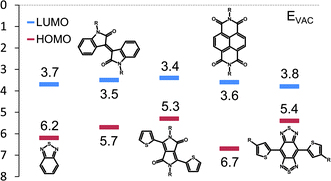 We would like to share with you a selection of high impact articles, published in Energy & Environmental Science covering the range of applications of metal–organic frameworks in the fields of energy and the environment. Some of these are available to read for free for a limited period.
We would like to share with you a selection of high impact articles, published in Energy & Environmental Science covering the range of applications of metal–organic frameworks in the fields of energy and the environment. Some of these are available to read for free for a limited period.
On behalf of Editor-in-Chief Nate Lewis (Caltech) and Advisory Board member Jeffrey R. Long (University of California Berkeley) we invite you to submit your best research to Energy & Environmental Science.
Read this high-impact MOFs research today:
Reviews and Analysis
FREE The current status of hydrogen storage in metal–organic frameworks—updated
Julian Sculley, Daqiang Yuan and Hong-Cai Zhou
DOI: 10.1039/C1EE01240A
FREE Mesoporous metal–organic frameworks: design and applications
Lifang Song, Jian Zhang, Lixian Sun, Fen Xu, Fen Li, Huanzhi Zhang, Xiaoliang Si, Chengli Jiao, Zhibao Li, Shuang Liu, Yingliang Liu, Huaiying Zhou, Dalin Sun, Yong Du, Zhong Cao and Zelimir Gabelica
DOI: 10.1039/C2EE03517K
FREE Metal organic frameworks for electrochemical applications
Adina Morozan and Frédéric Jaouen
DOI: 10.1039/C2EE22989G
FREE Conjugated porous polymers for energy applications
Filipe Vilela, Kai Zhang and Markus Antonietti
DOI: 10.1039/C2EE22002D
FREE Emerging concepts in solid-state hydrogen storage: the role of nanomaterials design
Hazel Reardon, James M. Hanlon, Robert W. Hughes, Agata Godula-Jopek, Tapas K. Mandal and Duncan H. Gregory
DOI: 10.1039/C2EE03138H
FREE Solid-state hydrogen storage for mobile applications: Quo Vadis?
Claudia Weidenthaler and Michael Felderhoff
DOI: 10.1039/C0EE00771D
Original Research
Metal–organic frameworks with potential for energy-efficient adsorptive separation of light hydrocarbons
Yabing He, Rajamani Krishna and Banglin Chen
DOI: 10.1039/C2EE22858K
Structure–property relationships of porous materials for carbon dioxide separation and capture
Christopher E. Wilmer, Omar K. Farha, Youn-Sang Bae, Joseph T. Hupp and Randall Q. Snurr
DOI: 10.1039/C2EE23201D
Feasibility of zeolitic imidazolate framework membranes for clean energy applications
Aaron W. Thornton, David Dubbeldam, Ming S. Liu, Bradley P. Ladewig, Anita J. Hill and Matthew R. Hill
DOI: 10.1039/C2EE21743K
Evaluating metal–organic frameworks for post-combustion carbon dioxide capture via temperature swing adsorption
Jarad A. Mason, Kenji Sumida, Zoey R. Herm, Rajamani Krishna and Jeffrey R. Long
DOI: 10.1039/C1EE01720A
Carbon capture in metal–organic frameworks—a comparative study
Jason M. Simmons, Hui Wu, Wei Zhou and Taner Yildirim
DOI: 10.1039/C0EE00700E
High and selective CO2 uptake, H2 storage and methanol sensing on the amine-decorated 12-connected MOF CAU-1
Xiaoliang Si, Chengli Jiao, Fen Li, Jian Zhang, Shuang Wang, Shuang Liu, Zhibao Li, Lixian Sun, Fen Xu, Zelimir Gabelica and Christoph Schick
DOI: 10.1039/C1EE01380g
Selecting metal organic frameworks as enabling materials in mixed matrix membranes for high efficiency natural gas purification
Seda Keskin and David S. Sholl
DOI: 10.1039/B923980B
CO2 capture and conversion using Mg-MOF-74 prepared by a sonochemical method
Da-Ae Yang, Hye-Young Cho, Jun Kim, Seung-Tae Yang and Wha-Seung Ahn
DOI: 10.1039/C1EE02234B
Evaluation of an industrial pilot scale densified MOF-177 adsorbent as an on-board hydrogen storage medium
Anne Dailly and Eric Poirier
DOI: 10.1039/C1EE01426A














